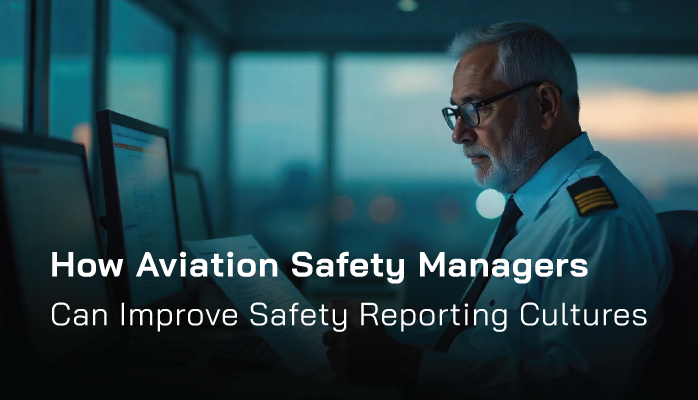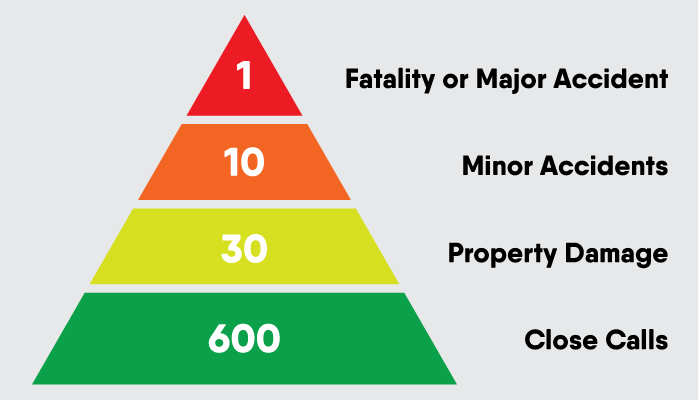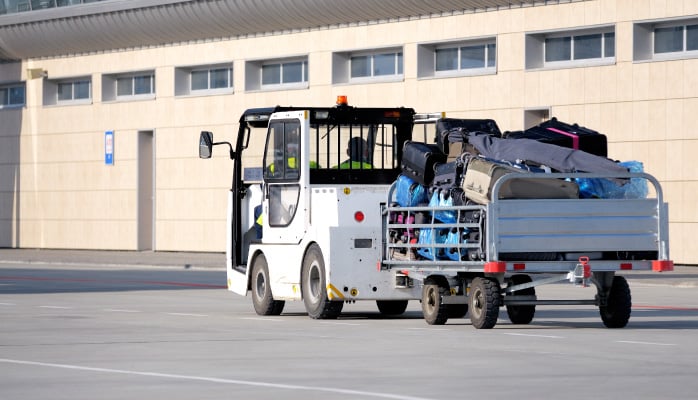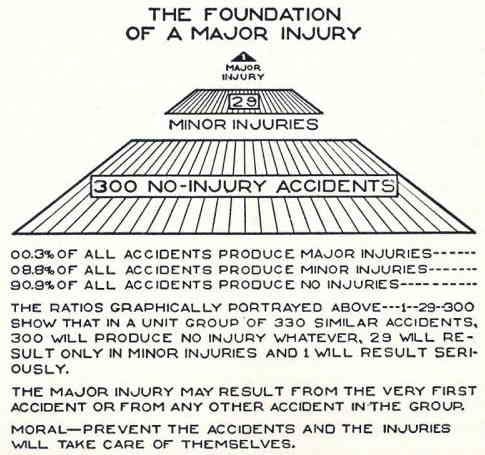Safety Reporting Remains Core to Aviation SMS

Participants of healthy aviation safety management systems (SMS) enjoy trusting relationships between management and staff. The goal for organizational success without sacrificing safety and employee welfare is actively promoted and accepted by all.
A systemic problem exists in our aviation industry in that an alarming number of aviation service providers have substandard corporate safety cultures.
Related Aviation Safety Reporting Culture Articles
- How to Develop Safety Reporting Cultures in Aviation SMS
- 5 Simple Tips to Improve Aviation Safety Reporting Cultures
- Essential KPIs for Poor Hazard Reporting Cultures in Aviation SMS - With Free KPI Resources
Poor Safety Culture = Poor Aviation SMS

Safety managers are hard driven professionals charged with implementing required SMS. Their task of successful SMS implementation remains impossible with poor safety reporting cultures.
Hazard reporting is a core component of every aviation SMS. Besides mandatory occurrence reporting requirements, management should actively encourage employees to report EVERY potential hazard and EVERY close call. Without adequate safety data, management may not be adequately prepared for the next major accident or fatality. Poor safety reporting culture equates to poor SMS performance.
This article discusses safety reporting cultures and techniques to improve your company's safety reporting culture.
Hazard Reporting Starts Off Aviation Risk Management Process
Detecting and mitigating unsafe and potentially hazardous conditions at airlines and airports is the responsibility of all stakeholders, including:
- Employees;
- Customers;
- Vendors and suppliers; and
- Tenants.
Aviation safety managers can only manage what is witnessed and reported. To improve safety, proactive safety managers must constantly encourage employees to use aviation hazard reporting tools, such as:
- Web-based hazard reporting forms;
- Paper reporting forms,
- Emailed reports;
- Verbal reports; or
- Offline hazard reporting apps.
Employees are frequently hesitant to report safety hazards because:
- They fear retaliation from other employees or managers;
- Supervisors discourage formal hazard reporting;
- They don't wish to seem incapable of dealing with issues as they arise;
- They are apathetic and are disconnected from the "team environment;"
- They don't think the hazard is really important;
- They believe others have already seen the hazard and reported it; or
- They don't believe anything will be done to rectify the situation.
Safety managers must seek ways to overcome "friction to hazard reporting" and ensure employees are aware of the various reporting options available. This resistance to participating in the aviation SMS is a global problem and spans every aviation industry segment. I should know because I see the data and work with hundreds of aviation service providers' SMS every year.
Resistance to your SMS does not go away by itself unless these toxic employees leave the company. As you may suspect, the most resistance to aviation SMS is from the "old-school" managers who have been in the industry for 30-40 years and don't want to change. They are not always vocal in their rebelliousness, but there are ways to ferret them out and deal with them.
Related SMS Resistance to Change Articles
- How to Reduce Resistance to Aviation SMS Programs With Difficult Employees
- Overcoming Resistance to Change through Transparency in Aviation SMS
- 3 Tips to Discover Resistance to Aviation Safety Program - With Checklists
Anonymous vs Confidential Hazard Reporting

The most common approach to reducing objections to hazard reporting is anonymous reporting. Anonymous reporting must be honored and employees must trust management that when a report is marked anonymous, management will not seek under-handed methods to determine who may have reported the issue, such as:
- Inspecting network activity logs;
- Reviewing surveillance tapes to see who used the computer to report the issue; or
- Ask IT personnel to divulge who reported the issue.
From my knowledge, all safety managers and every company we've dealt with respect anonymous reporting. Anonymous means anonymous and if the trust is broken, there is little chance employee trust can ever be regained.
Another approach is confidential hazard reporting. Confidential reporting differs from anonymous reporting in that the reporter doesn't mind if the safety team knows their identity, but the reporter doesn't wish other managers or employees to know their identity.
We have seen a few variants to confidential reporting:
- Only one "pre-selected" person knows the identity of the reporter;
- Only the safety team and investigators know the reporter's identity; or
- Selected "safety committee members" only access these reports.
Non-Punitive Reporting Policies
Non-punitive reporting policies often improve employee attitudes towards reporting safety concerns. Non-punitive reporting policies should be frequently mentioned and made very visible in safety promotion materials.
Aviation service providers may spend considerable sums on the best aviation SMS hazard reporting database tools. Yet their aviation SMS will fail when employees don't believe in management's published non-punitive reporting policies. All management personnel must support the non-punitive reporting policy.
Have You Read
- How to Write Non-Punitive Reporting Policy for Aviation SMS Programs - Free Templates
- Learn How Confidential Aviation Hazard Reporting Systems Offer Assurance to Employees
- Indicators of Good Hazard Reporting Culture
Management's Visible Support for the Aviation SMS
Top management's visible and unspoken attitudes influence safety cultures at every company. Top management must regularly and EXPLICITLY communicate their commitment to a safe workplace:
- at safety meetings;
- at special company events;
- in safety newsletters; and
- in safety policies.
Safety managers should also be encouraging department heads to communicate to staff about how the hazard reporting process helps:
- The organization achieve goals;
- The organization becomes more competitive, thereby ensuring job security; and
- Customers, employees, and stakeholders enjoy the highest level of safety.
Department heads should regularly remind employees of their duty to report hazardous conditions or events. Scheduled safety meetings continue to reinforce to employees that reported issues help the company eliminate and mitigate workplace risks while improving operations.
Why Managers Don't Encourage Employees to Report
Managers and supervisors may have personal reasons for not encouraging employees to report safety concerns. Examples include:
- Personal conflict with the safety manager;
- Fear of drawing attention to their department;
- Not wanting more work because of formal SMS documentation requirements; and
- The appearance of unsafe operations carrying over to the manager's personal management style.
Safety managers must consider these elements when dealing with department heads and supervisors.
Many valid "reported" safety issues may not mean that the manager is incompetent. It is probable that there may be:
- underlying procedural actions that need to be revised; or
- more exposure to hazards in their department than in other operational areas.
Documenting safety concerns in a formal program will certainly be intimidating to managers who don't know "how the system operates." When managers are not properly trained, they will justifiably believe that it takes more time to perform the formal documentation than it takes to simply manage the issue on an informal basis. The problem with this approach is that they don't understand the philosophy behind the Heinrich/Bird safety pyramid.

In short, the Heinrich/Bird safety pyramid illustrates that for every major injury or fatality, there are hundreds of close calls. If the close calls were managed properly through proper risk management strategies, the major accidents and injuries would take care of themselves. The above image is from Heinrich's book: "Industrial Accident Prevention: A Scientific Approach."
The footnotes to the pyramid triangle are noteworthy here:
- The major injury may result from the first accident or any other accident in the group of incidents; and
- Moral: Prevent the accidents and the injuries will take care of themselves.
The point is that safety managers and department heads need to encourage all employees to report close calls so the company can strengthen its risk controls. As these close calls are reported and put through the risk management process, management has an opportunity to review related hazards, risks, and the effectiveness of their implemented control measures.
This is beauty in action and significantly bolsters safety at your organization.
Related Aviation Risk Management Articles
- Difference Between Hazards, Risks & Control Measures in Aviation SMS
- How to Monitor the Effectiveness of Control Measures
- 5 Tips Reviewing Hazards, Risks & Controls in Aviation SMS - With Examples
Final Thoughts on Improving Safety Reporting Cultures
Management's support of the aviation SMS and non-punitive reporting policies are perhaps the two most important elements to improving an aviation safety reporting culture.
It continues to surprise me how many regions around the world still follow the punitive approach. Whenever employees fear reprisals from either themselves or their friends, they will not participate in your aviation SMS. What is in it for the employees?
Furthermore, when managers and supervisors tell employees not to formally submit safety issues, then employees will not participate. Major accidents and injuries will take care of your company, instead of taking care of themselves as illustrated by the Heinrich-Bird incident/accident pyramid.
Managers and supervisors must be given adequate training and tools to formally document all safety concerns. This becomes an incredibly important point to your SMS success. When managers have to work too hard to document safety concerns, they won't do it. Important safety activities that require management's participation in the documentation include:
- Corrective and preventive actions;
- Tracking overdue tasks;
- Management of change activities;
- Audit findings;
- Emergency response planning; and
- Hazard identification, risk analysis, and mitigation strategies.
Don't expect your company managers to enjoy working in isolated spreadsheets and Word documents. This is a buzz-kill. Your SMS will not be sustainable.
To achieve a professional, sustainable aviation SMS, you should be using professional, built-to-purpose SMS database software that allows a single system to manage all SMS requirements. If your current SMS cannot manage the risk of all the close calls easily, your next reported issue may be a major injury or fatality. We can help.
Need to Reduce Resistance to Your SMS?
Last updated August 2025.








